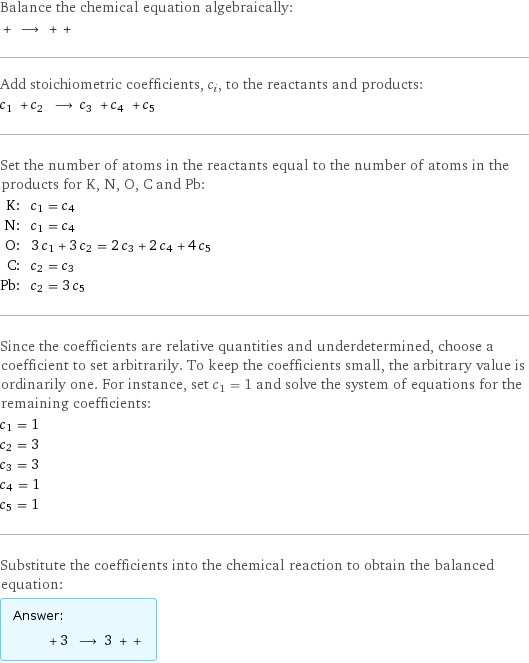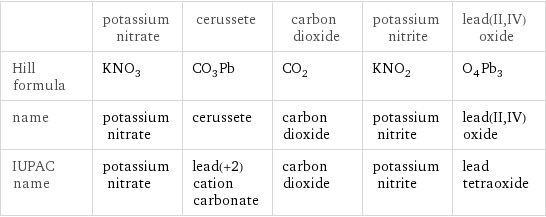Input interpretation

potassium nitrate + cerussete ⟶ carbon dioxide + potassium nitrite + lead(II, IV) oxide
Balanced equation

Balance the chemical equation algebraically: + ⟶ + + Add stoichiometric coefficients, c_i, to the reactants and products: c_1 + c_2 ⟶ c_3 + c_4 + c_5 Set the number of atoms in the reactants equal to the number of atoms in the products for K, N, O, C and Pb: K: | c_1 = c_4 N: | c_1 = c_4 O: | 3 c_1 + 3 c_2 = 2 c_3 + 2 c_4 + 4 c_5 C: | c_2 = c_3 Pb: | c_2 = 3 c_5 Since the coefficients are relative quantities and underdetermined, choose a coefficient to set arbitrarily. To keep the coefficients small, the arbitrary value is ordinarily one. For instance, set c_1 = 1 and solve the system of equations for the remaining coefficients: c_1 = 1 c_2 = 3 c_3 = 3 c_4 = 1 c_5 = 1 Substitute the coefficients into the chemical reaction to obtain the balanced equation: Answer: | | + 3 ⟶ 3 + +
Structures

+ ⟶ + +
Names

potassium nitrate + cerussete ⟶ carbon dioxide + potassium nitrite + lead(II, IV) oxide
Chemical names and formulas

| potassium nitrate | cerussete | carbon dioxide | potassium nitrite | lead(II, IV) oxide Hill formula | KNO_3 | CO_3Pb | CO_2 | KNO_2 | O_4Pb_3 name | potassium nitrate | cerussete | carbon dioxide | potassium nitrite | lead(II, IV) oxide IUPAC name | potassium nitrate | lead(+2) cation carbonate | carbon dioxide | potassium nitrite | lead tetraoxide